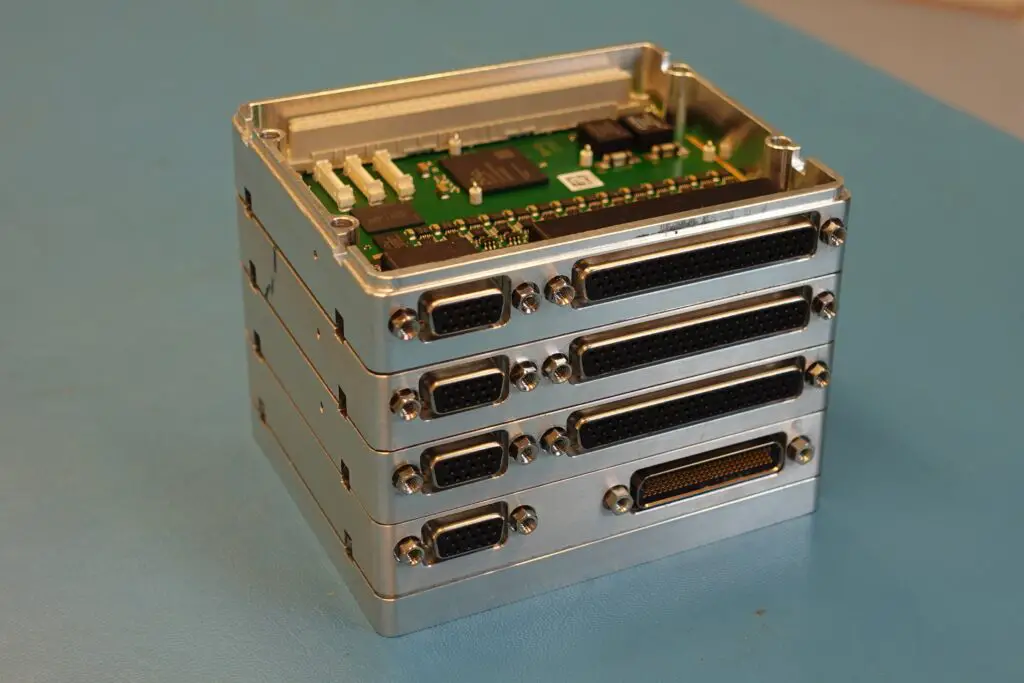To function during flight a sub-orbital rocket needs a service system in order to do science and send sensor data back to the ground. The engineering department at Andøya Space have developed a new service system that can transmit three times more data than the previous system. The service system is composed of four circuit boards, stacked on top of each other and mounted in an aluminum casing of approximately ten cubic decimeters, which is approximate one liter. These circuit boards handle four sub-tasks: data-encoding, data acquisition, power management, and event-handling. Data encoding is the process of collecting data from several different sources, sorting it and translating it into a bit-stream of zeros and ones.
The power management system delivers power to all systems and controls the switching between battery and ground power. The event handler is detecting lift-off and arms the onboard pyrotechnics. During a flight the payload often separates from the motor, opens hatches, releases the nosecone and deploys a parachute. All these events are controlled by the event handler. The data acquisition system allows analog sensors to be interfaced directly to the service system. The new service system will be transmitting three times more data compared to the previous system. The data acquisition has 16 times better resolution. This allows for higher resolution and more detailed analysis on a finer scale.

“A service system is essentially a support system for the rocket payload and the onboard instruments. It has several tasks, but it basically comes down to getting the instruments into the right position to do science and send sensor data back to the ground. This is often thought of as the main task of the service system, and therefore the system is often mistakenly said to be an encoder. It is an encoder, but it is so much more than that. The encoder is only one fourth of the system,” says Aerospace Chief Engineer Geir Lindahl at Andøya Space. He is one of the engineers who have worked closely with the development of the new system.
A sounding rocket can travel up to a couple of thousand meters per second. To do fine scale measurements at this speed, a high sampling rate and high data throughput is essential. The first launch to use the new system will be the Norwegian sounding rocket Maxidusty 2, scheduled to be launched in the summer of 2024. Andøya Space has been building payloads for over two decades, and all payloads require a service system. Earlier flights used the predecessor, STAPPE 1, which was developed by the Norwegian Defence Research Establishment (FFI). However, when FFI ended its sounding rocket research, the design wasn’t renewed. Components became obsolete and it became impossible to produce more units of the old system.












